The curtain has fallen on the two teams of the final of Copa América 2024, revealing Argentina and Colombia as the finalists. They will meet to determine the champion of this edition of the tournament. Argentina aim to win the championship for the 16th time, aiming to surpass Uruguay who have also won it 15 times. Meanwhile, Colombia are aiming for their second Copa America title.
Argentina reached the final after topping their group, which included Canada, Chile, and Peru, with a perfect record of nine points from three victories. They then defeated Ecuador in the quarter-finals on penalties after a 1-1 draw in the match and secured a 2-0 victory over Canada in the semi-finals.
Meanwhile, Colombia reached the final after topping their group, which included Brazil, Costa Rica, and Paraguay, with seven points from two wins and a draw. They then defeated Panama 5-0 in the quarter-finals and Uruguay 1-0 in the semi-finals.
We all know that finals in such major tournaments are often decided by small details. Therefore, in this 2024 Copa America tactical analysis, we will discuss the potential role that set pieces could play in determining the champion, highlighting the fundamental tactics of both teams in set pieces during this tournament.
Argentina
Beginning with offensive corner kicks, which are considered crucial for both teams in terms of set-piece strategies, Colombia stand out as the team with the highest number of goals scored from corners in the tournament, totalling three goals. Argentina follows closely in second place with two goals.
Argentina repeatedly and significantly targeted Alexis Mac Allister in the area before the near post to flick the ball to another teammate on the far post. This area isn’t usually protected by an assigned zonal defender, especially against teams with the man-marking defending system with only two zonal defenders, as shown in the photos below.
The idea of using Mac Allister is that he has a reasonable ability only to touch the ball toward the far post while not being marked by the best defender or even the best second defender of the opponent’s defenders, naturally, because he isn’t the best header in his team. This mismatch began to arise again, and you can remember Dani Carvajal’s goal in the UEFA Champions League Final for Real Madrid against Borussia Dortmund.
The idea is simple because if you target your best header, he will be marked by the best defender. Hence, teams try to target a good player, but not the best, who can win the duel against his marker. The second trick is that he pushes his marker slightly after running toward the ball to cause a separation between them to win a second before him, as shown in the second and third photos.
Going back to the first photo, the second targeted player, who will go to the far post, starts with his back to his targeted area, acting like he would block the defenders for the attacker behind him, but he turns around and goes to the targeted area while the ball is on the air exploiting that his marker tracks the ball on the air focusing on the first touch on the near post losing the communication with him, as shown in the remaining photos.
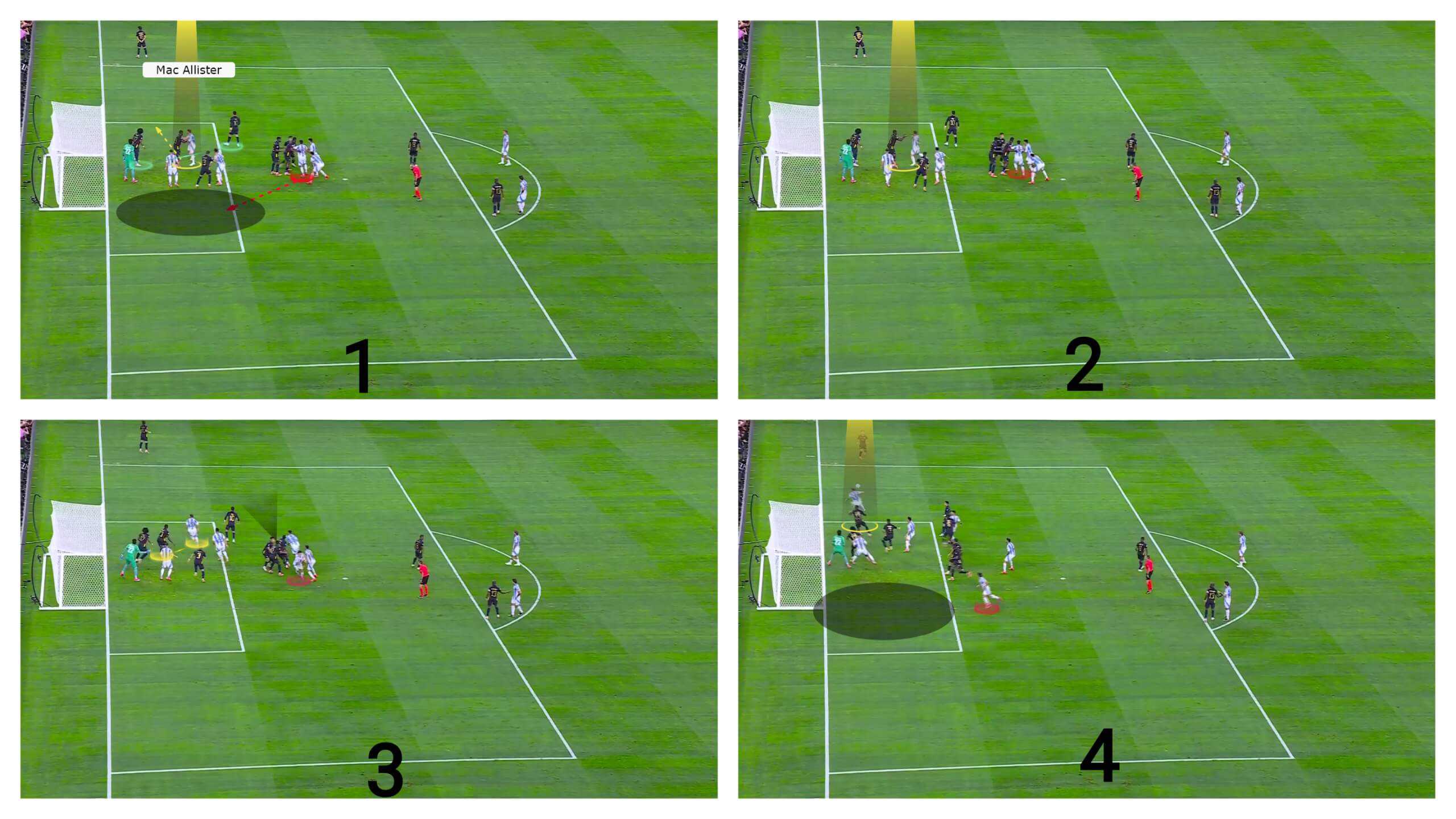
Ultimately, it was easy for the second targeted player to score an important goal.
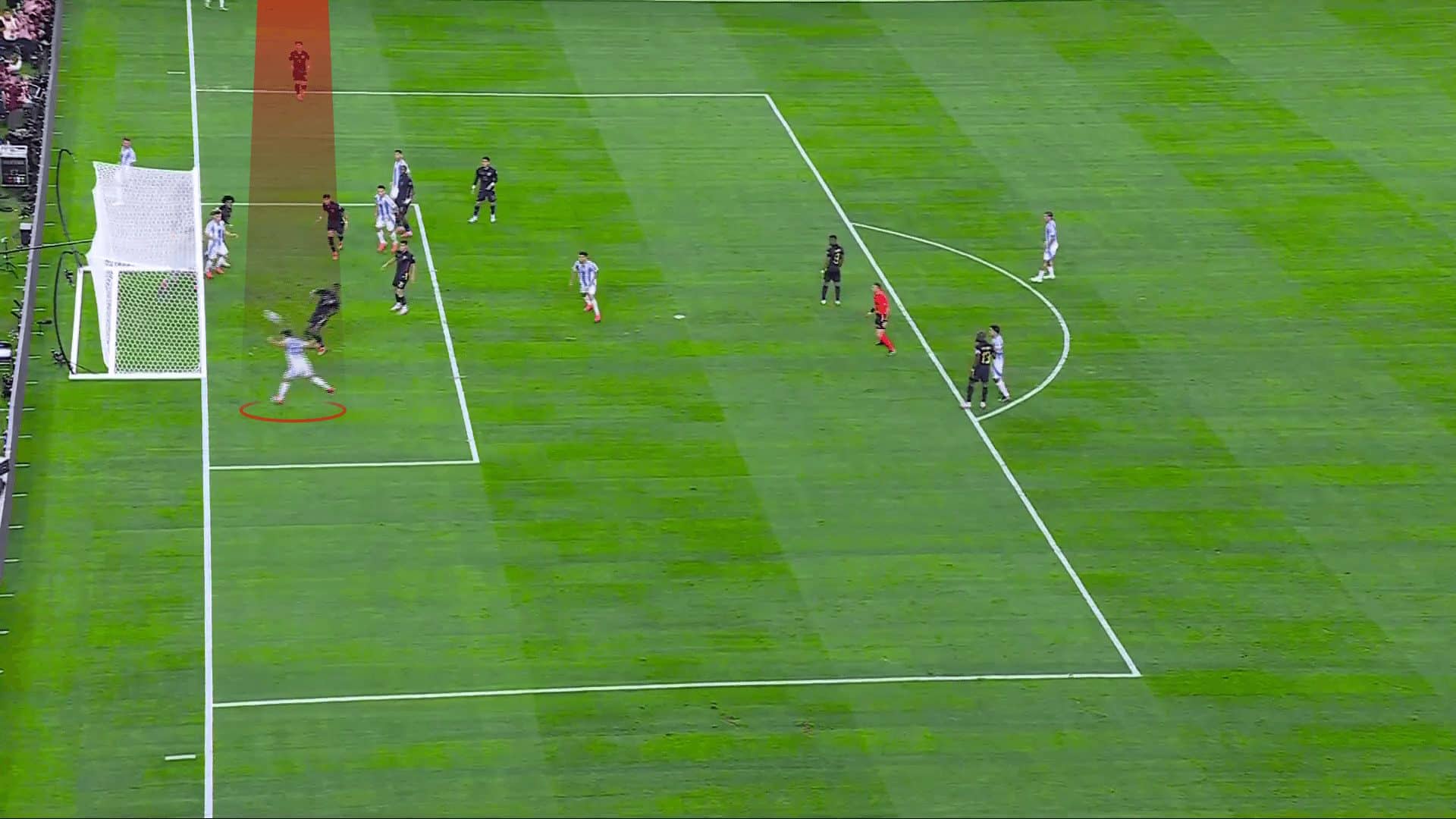
Going to free-kicks, they have also a way to target Mac Allister, who stands on the offside. At the same time, opponents don’t feel worried about him, and then he chooses the victim as the taker, Lionel Messi, moves, giving him a slight push from his back to be onside, having the area free in front of him as in the first photo below. To complete the routine, his teammate behind him blocks the defender behind him to ensure the target player will reach the target area free. At the same time, his mate on the far post runs to be an option after that, and he drags defenders to make sure that the target layer is onside, as in the second photo.
In the third photo, his teammate in white runs in front of his defender to take his attention to free the target layer, while an offside player blocks the last defender on the far post for his mate after him, as in the fourth photo.
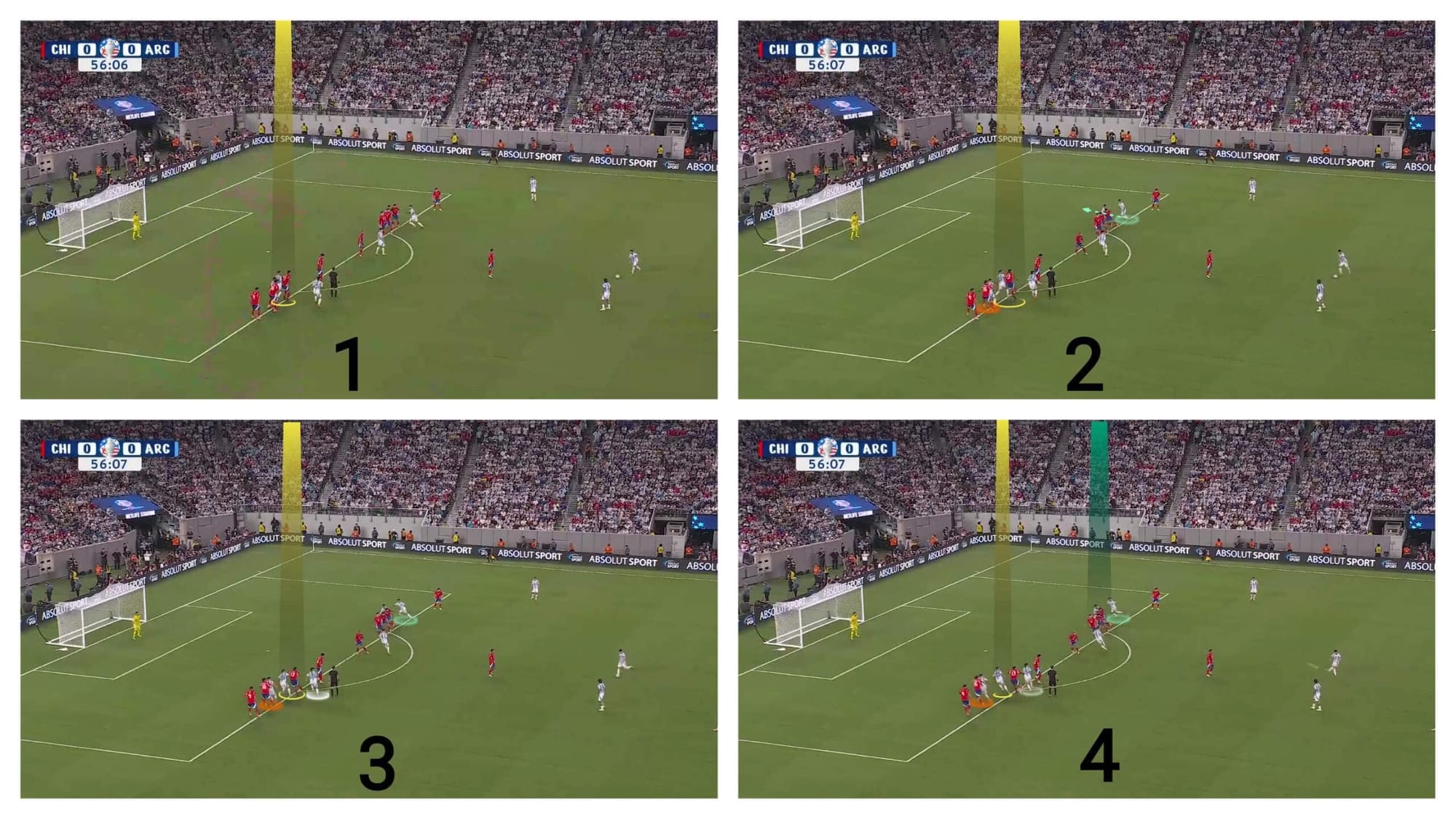
In the end, the plan works, but the targeted player can’t control the ball well.
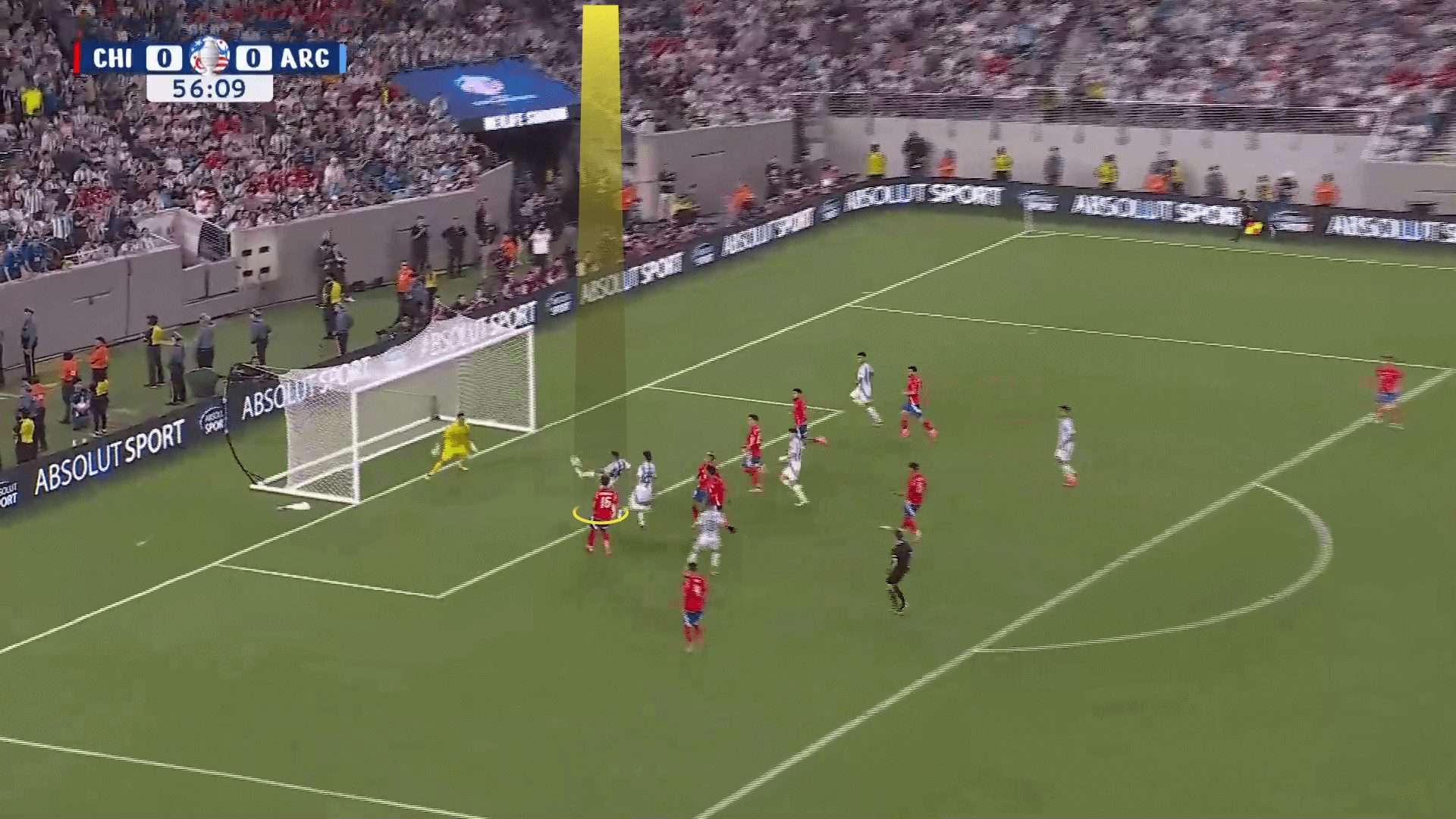
They have another significant strategy in free kicks. They assign a late-targeted player in yellow and ask him to move after the two green players in front of him, who take the attention of the defenders. Then, he starts to run through them quickly without any obstructions, as in the photo below.
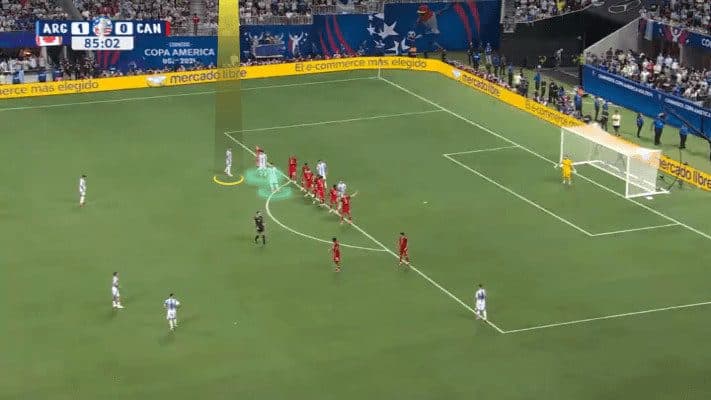
This late and far run helps him to meet the line with his full momentum so he can reach areas near the goal far away from the evening line without being offside.
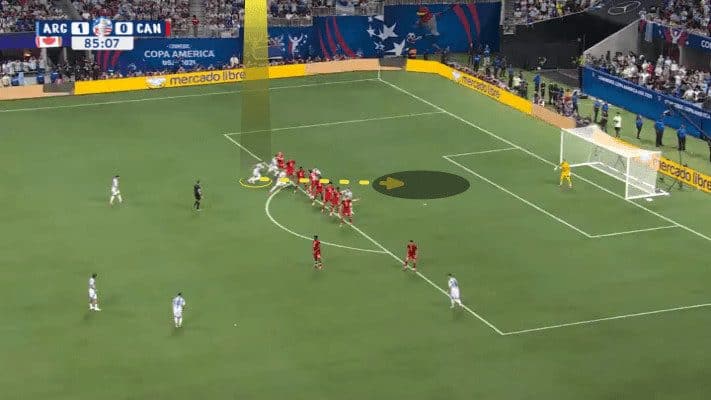
The plan works, but he misses the chance strangely. Depending on the strategies explained, asking the goalkeeper to stand a little forward from the beginning would be good advice.
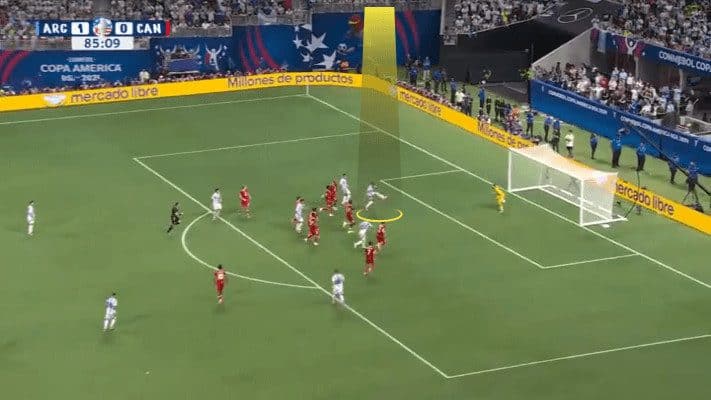
They may be weak at defending corners against short corners. Let’s see why!
They defend with three zonal defenders on the near post and the middle, leaving the far post empty, five-man markers, a short-option defender and a rebound defender.
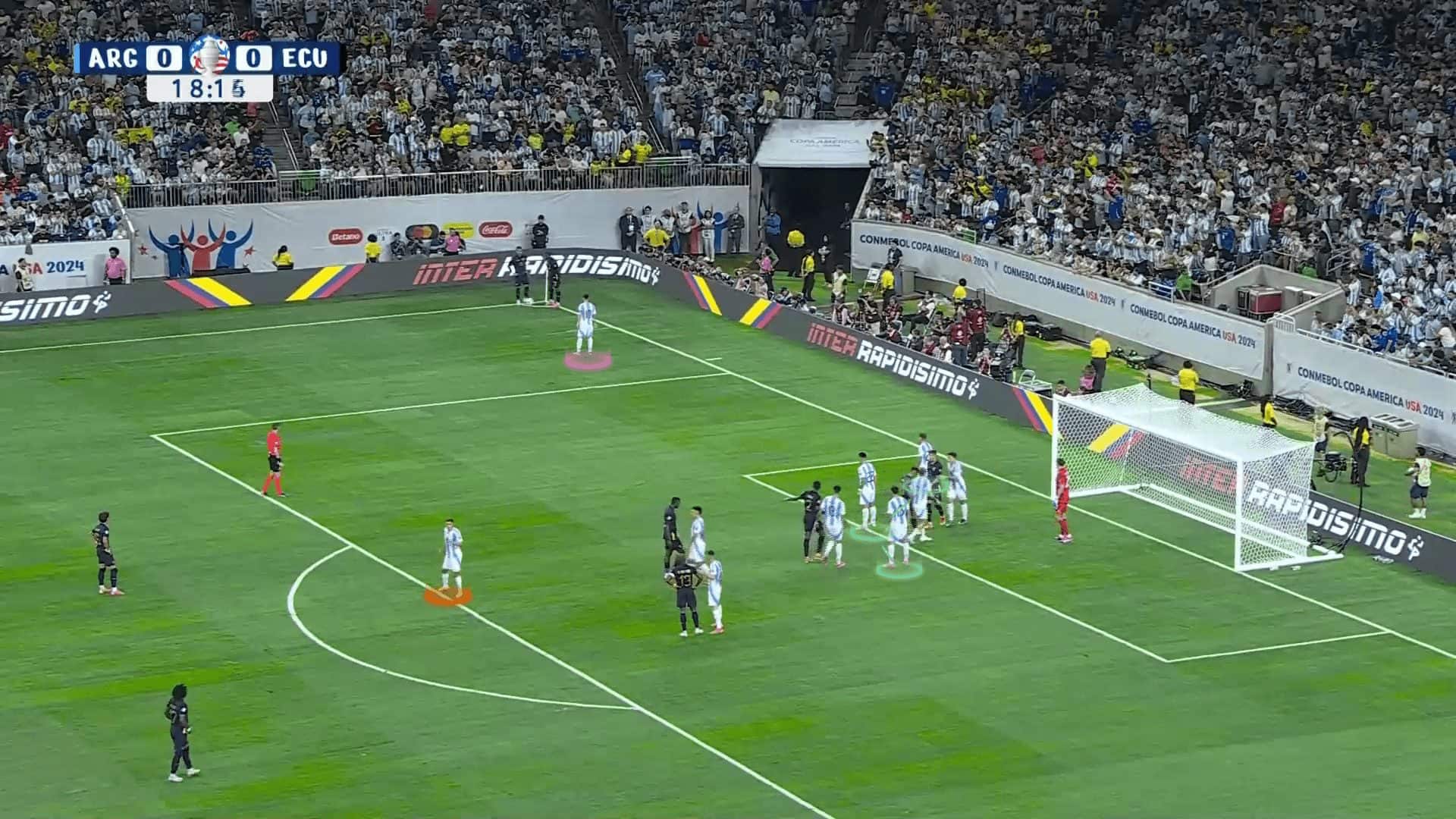
When two layers stand on the ball, there will be a quick 2v1 situation against their short-option defender, Lionel Messi, who isn’t the best at defending. Therefore, they ask the first zonal defender to go to help, but the overlap that the taker did makes the distance longer.

It gives the taker time and space to cross the ball, but we suggest targeting the empty far post.
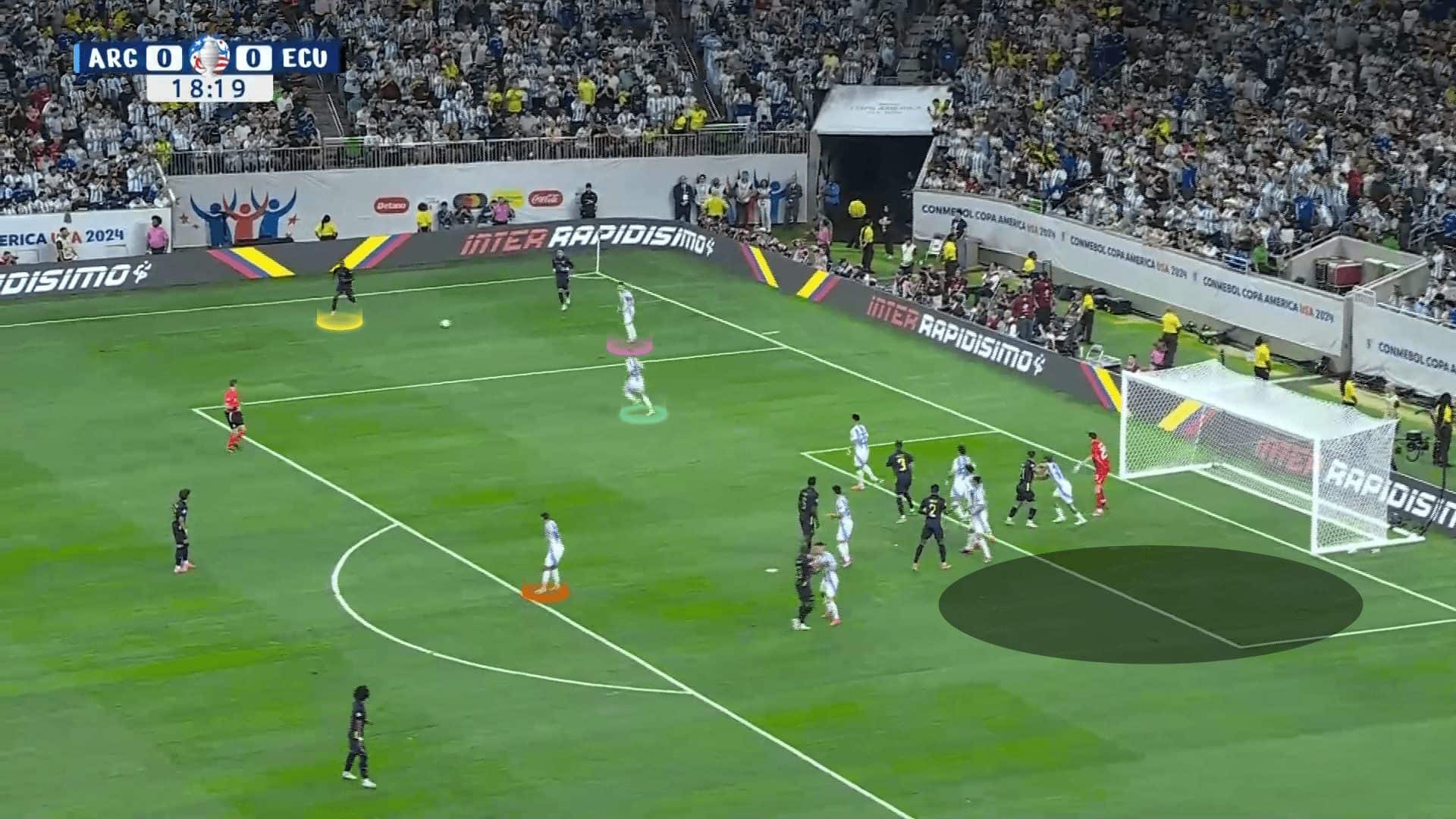
Ecuador already has an excellent idea to target a late player, in white, who doesn’t move except after the short pass when all of the defenders focus on the ball. In this situation, Messi decided to be close to the taker after overlapping. Still, the short-option attacker didn’t have a problem crossing himself, but he targeted the middle, not the area we recommend below.
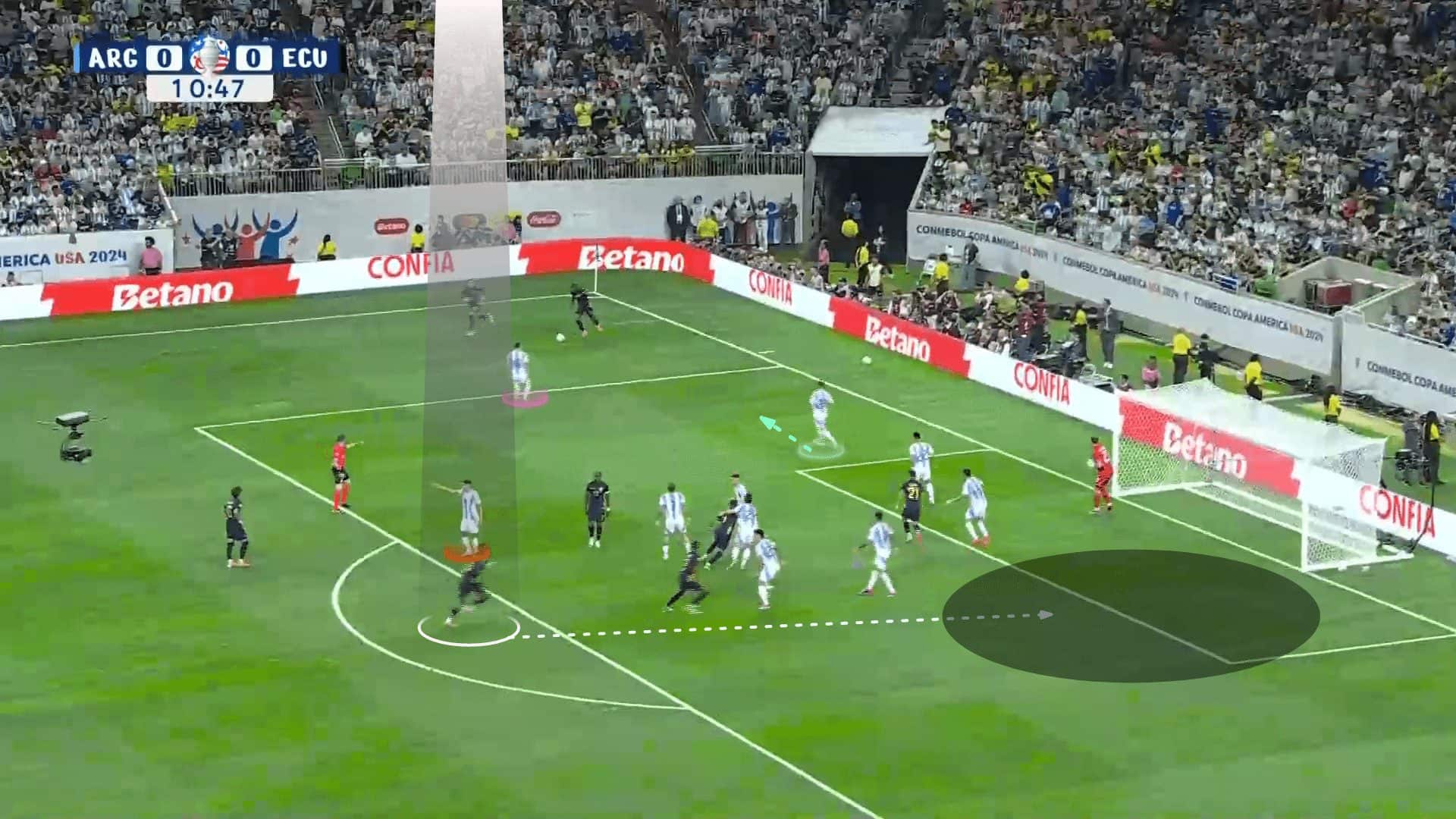
Colombia
Starting with attacking corners, they sometimes prefer to start having many players standing together in a pack. In the targeted area, the far post is near the six-yard line. After that, they use the principle of underloading, which means asking all players to leave the targeted area except the targeted player, Jefferson Lerma in this case, who will be in a 1v1 against his marker while asking the player in yellow to run after that while defenders focus on the ball to get the ball if it passes them.
We should also mention the benefits of this starting position, which is forcing the man markers to give their backs to the ball to keep tracking the attackers. This causes an orientation problem because they can’t keep tracking the ball and the opponent at the same time, forcing the defenders to sometimes jump with their backs to the opponent.
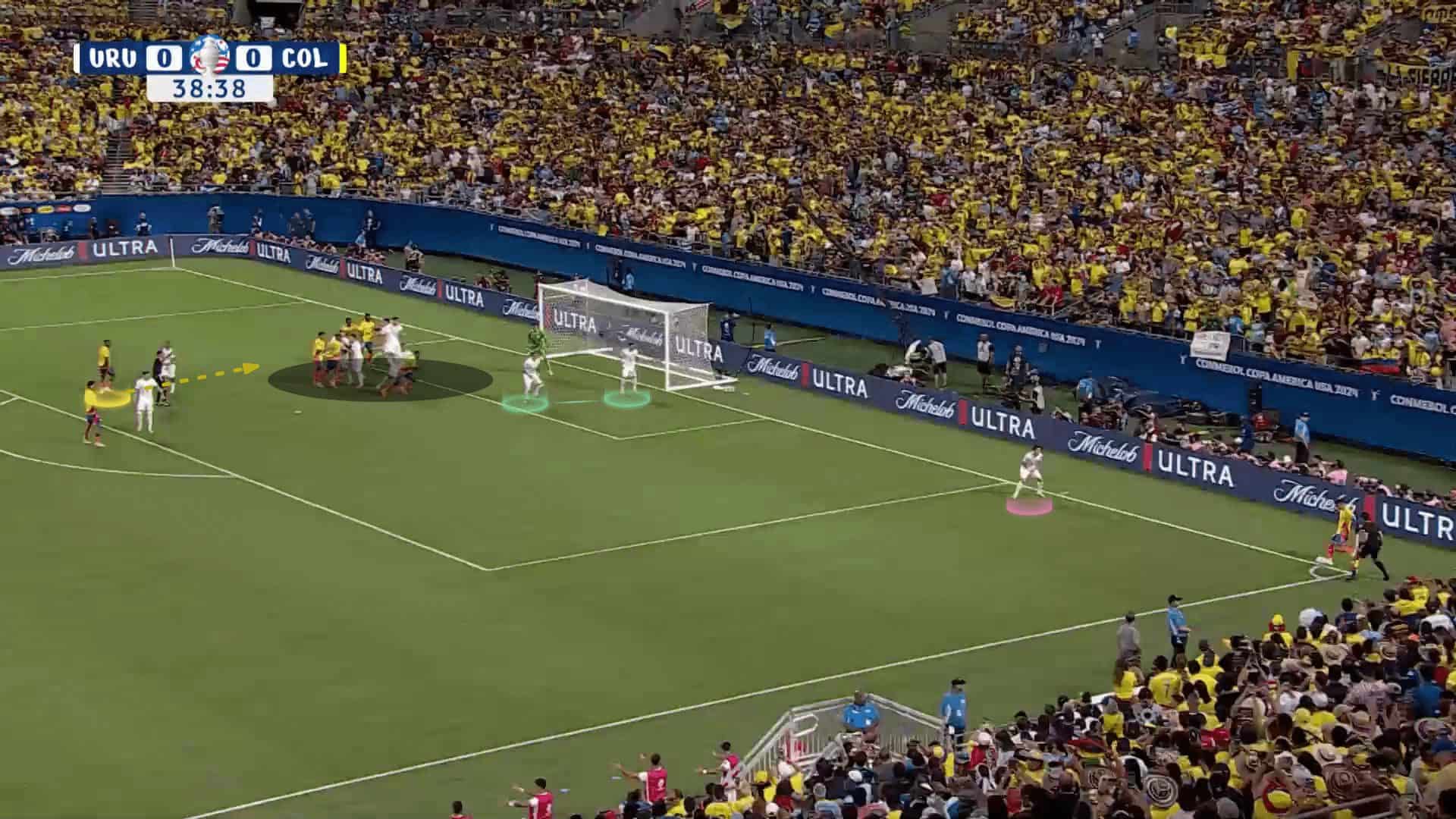
The plan works, and the result is the only goal against Uruguay.
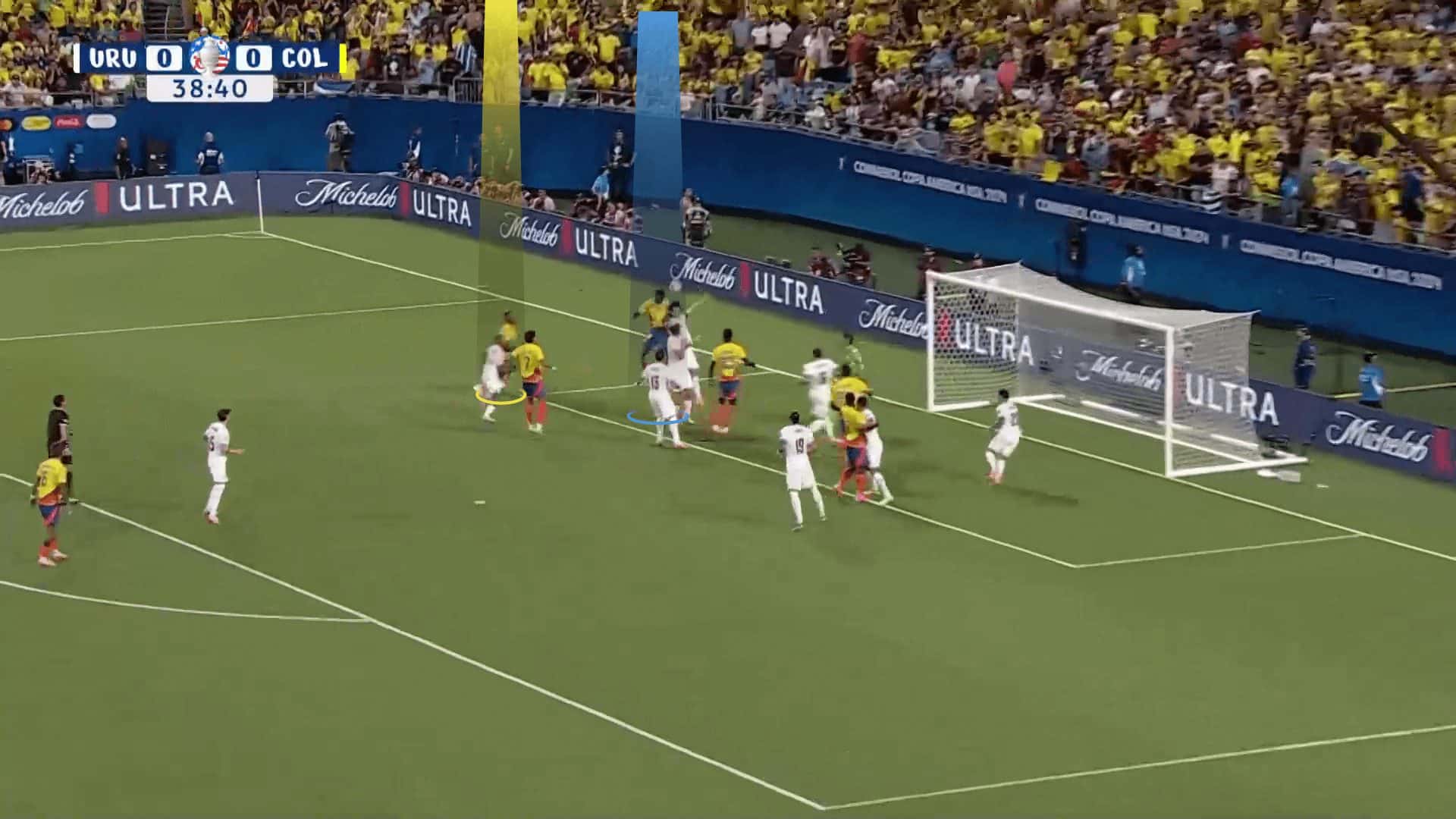
We can’t discuss Colombia’s set-pieces without mentioning James Rodríguez’s significant effect. He uses a high-floated cross that takes a long time to reach the targeted area at a high level. This gives the great attackers at heading the chance to show their abilities at measuring the ball in the air and jumping to get the ball from the highest point.
In the first photo below, three players stand in a pack while the targeted player is in yellow. In the second one, he starts to step toward the targeted area as James touches the ball while the two players in green block their attackers to ensure they won’t go toward the ball. After that, he exploits that his marker finds it difficult to track him and the high-level ball simultaneously, especially with the long time the ball spends in the air, as in the remaining photos.
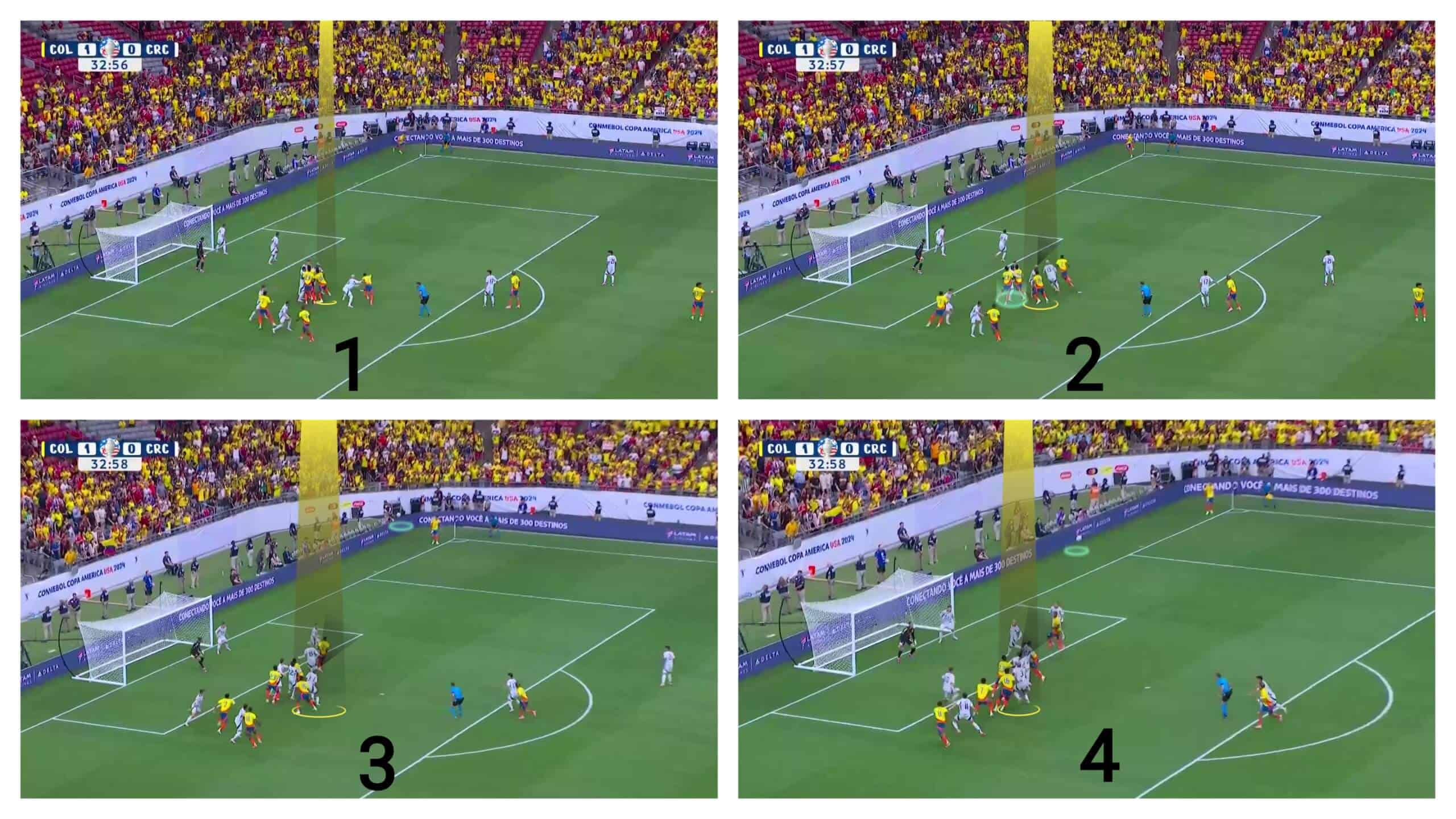
He manages to get the first touch, but with this jam around him, he can only touch the ball while another player waits on the far post. Just touching the ball in this area can cause chaos, leading to dangerous chances, as already happened in this case.
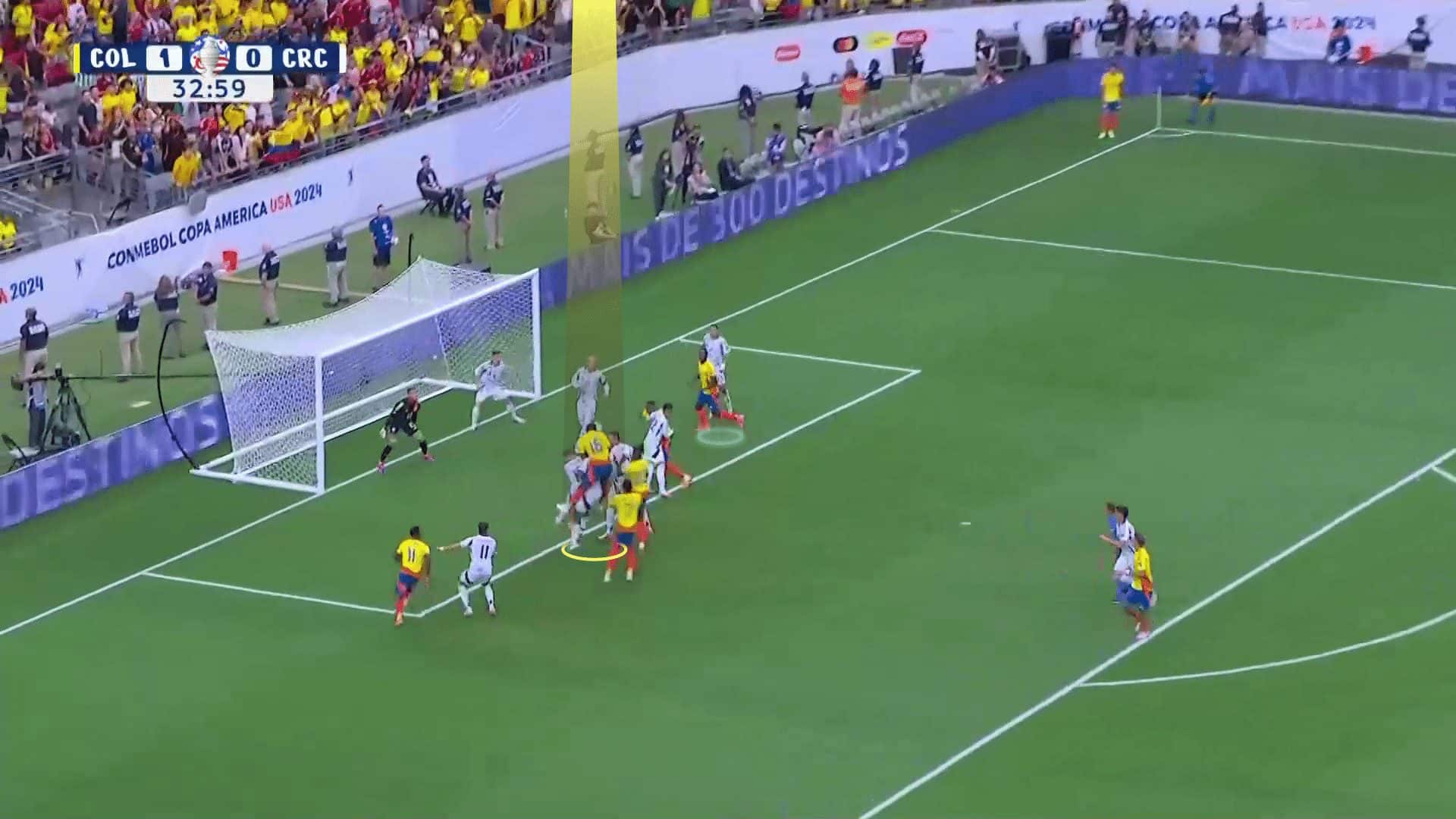
James Rodríguez is also dangerous at free kicks because his great ball-striking techniques make him unpredictable. You can see him deceive Alisson Becker in the first two photos, in which he acts like he would let the other taker cross the ball while the rest of the team stands, acting like they would receive a cross, which decreases the wall’s members, especially with this far distance, but he shoots the ball perfectly into the crossbar.
On the other hand, in the third and fourth photos, the wall is ready for the shot, so the defending players in the box aren’t many. Thus, it is surprising to cross the ball to the attackers on the far post, who are more ready than the defenders.
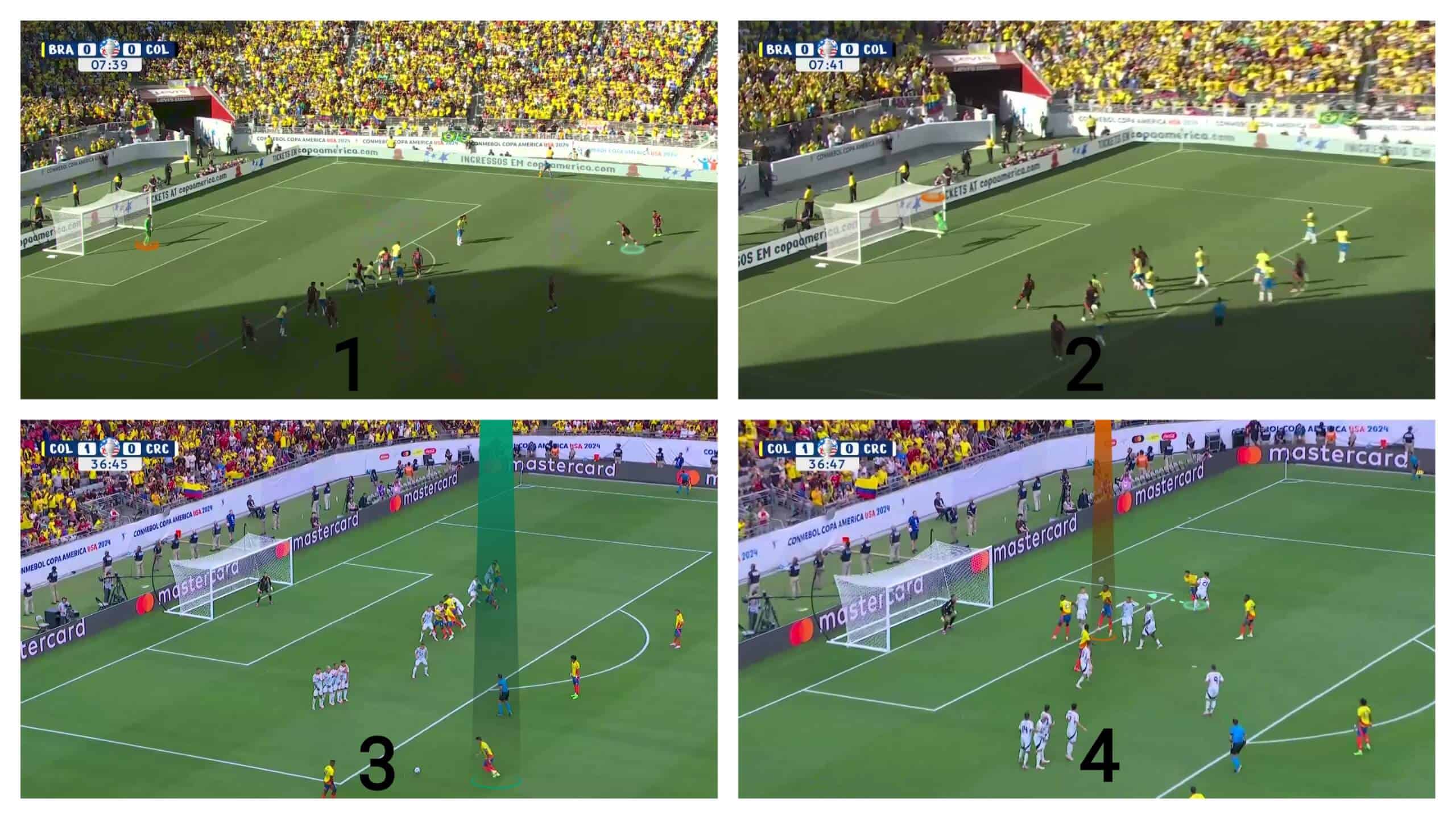
Finally, James has a unique way of crossing from far areas, targeting a near area to the goal and making the cross reach the targeted area at a high level, enabling the targeted player to reach the targeted area running. Hence, he can jump more high with good momentum, as in the two photos below.
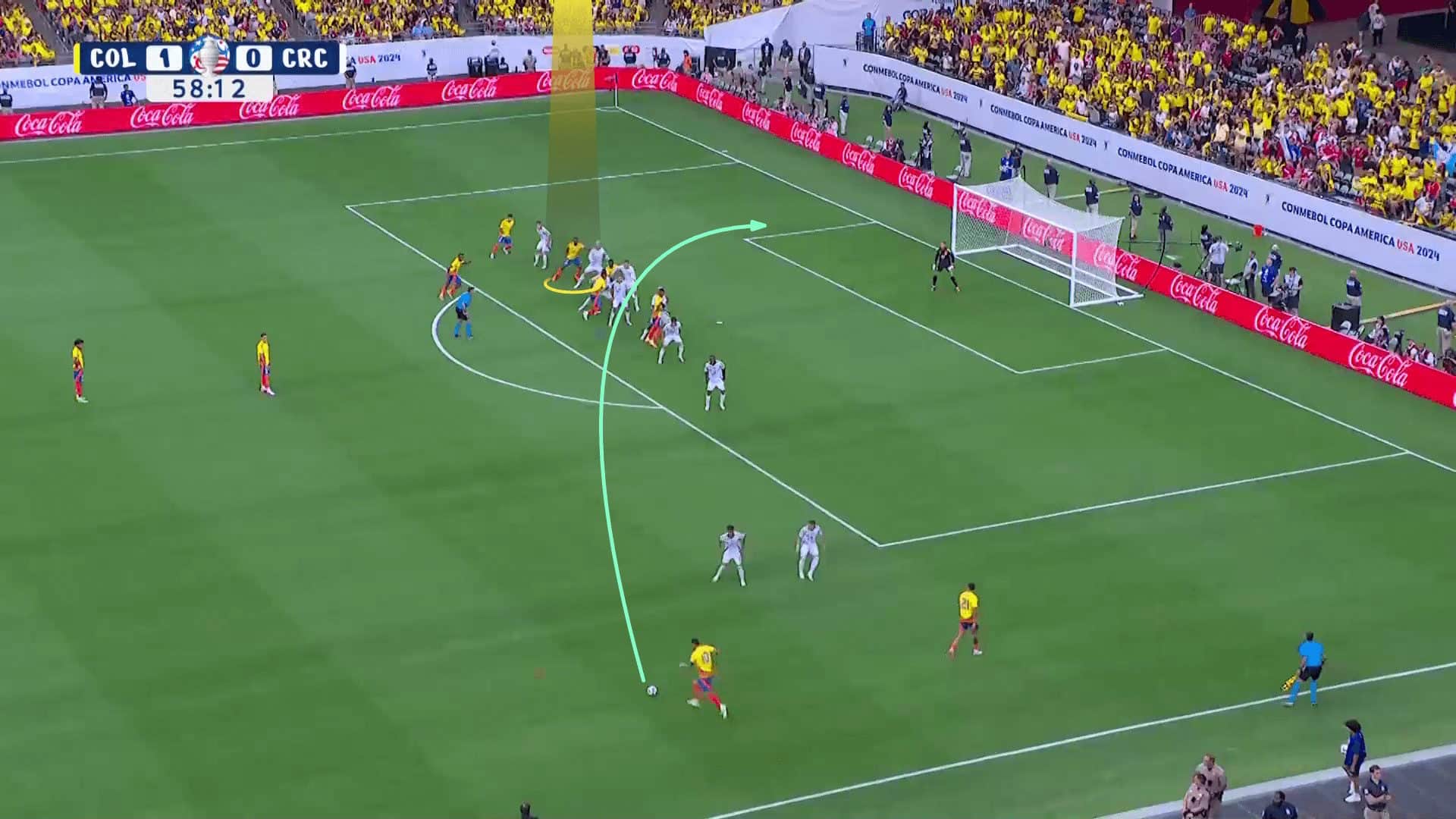
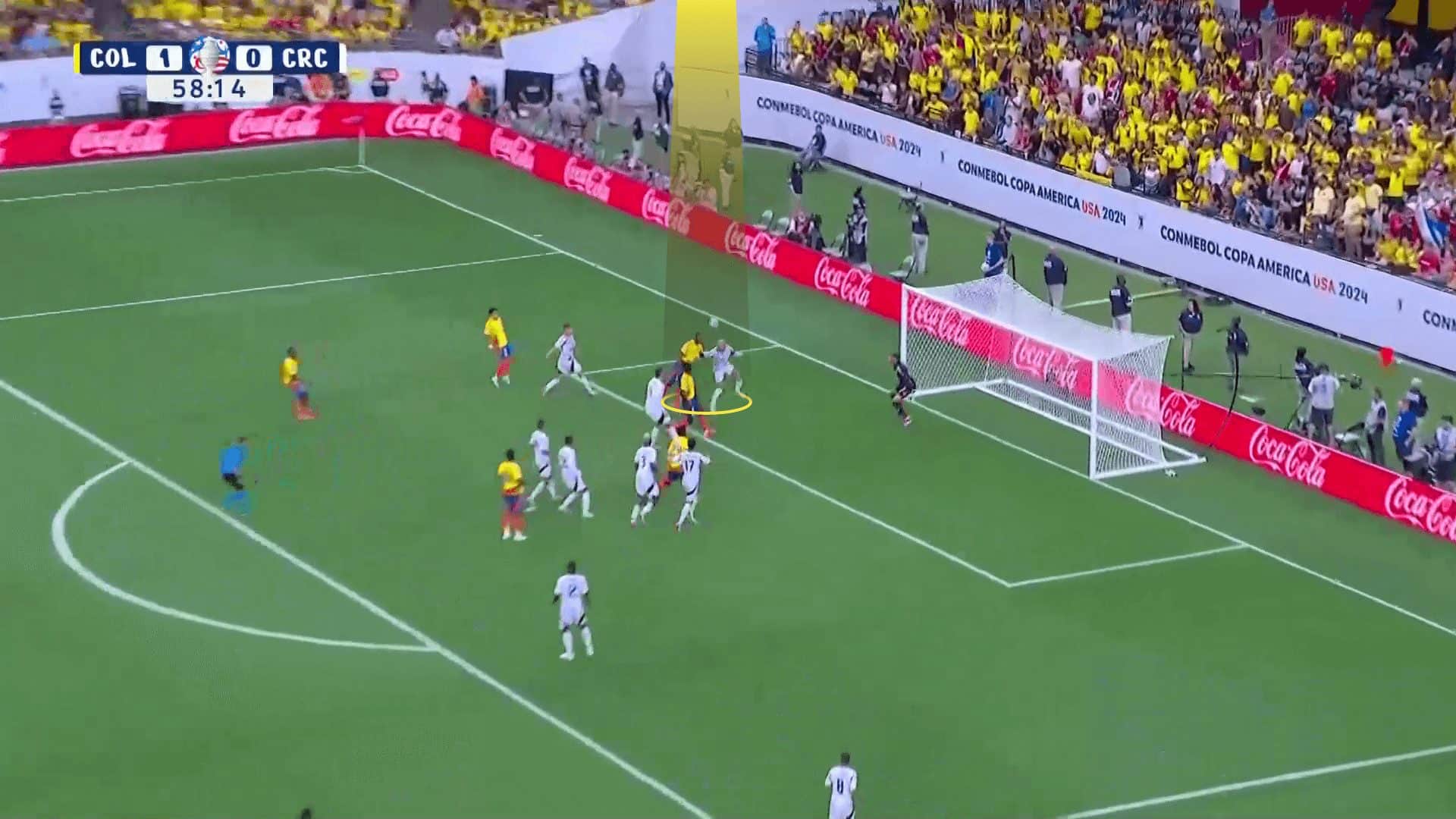
Conclusion
In this analysis, we have explained how both final teams can make the best use of set pieces, showing their most significant set-piece routines in the tournament so far.
To summarize this set-piece analysis, we have explained how Argentina use Alexis Mac Allister for flicks on corners and how they exploit the free-kicks with two main strategies while also having a probable weakness at defending against short corners. Regarding Colombia, we have shown how they use underloading to empty the far-post area during corners and how they exploit James Rodríguez’s brilliant floated crosses in corners while also having a great impact at direct and indirect free-kicks.

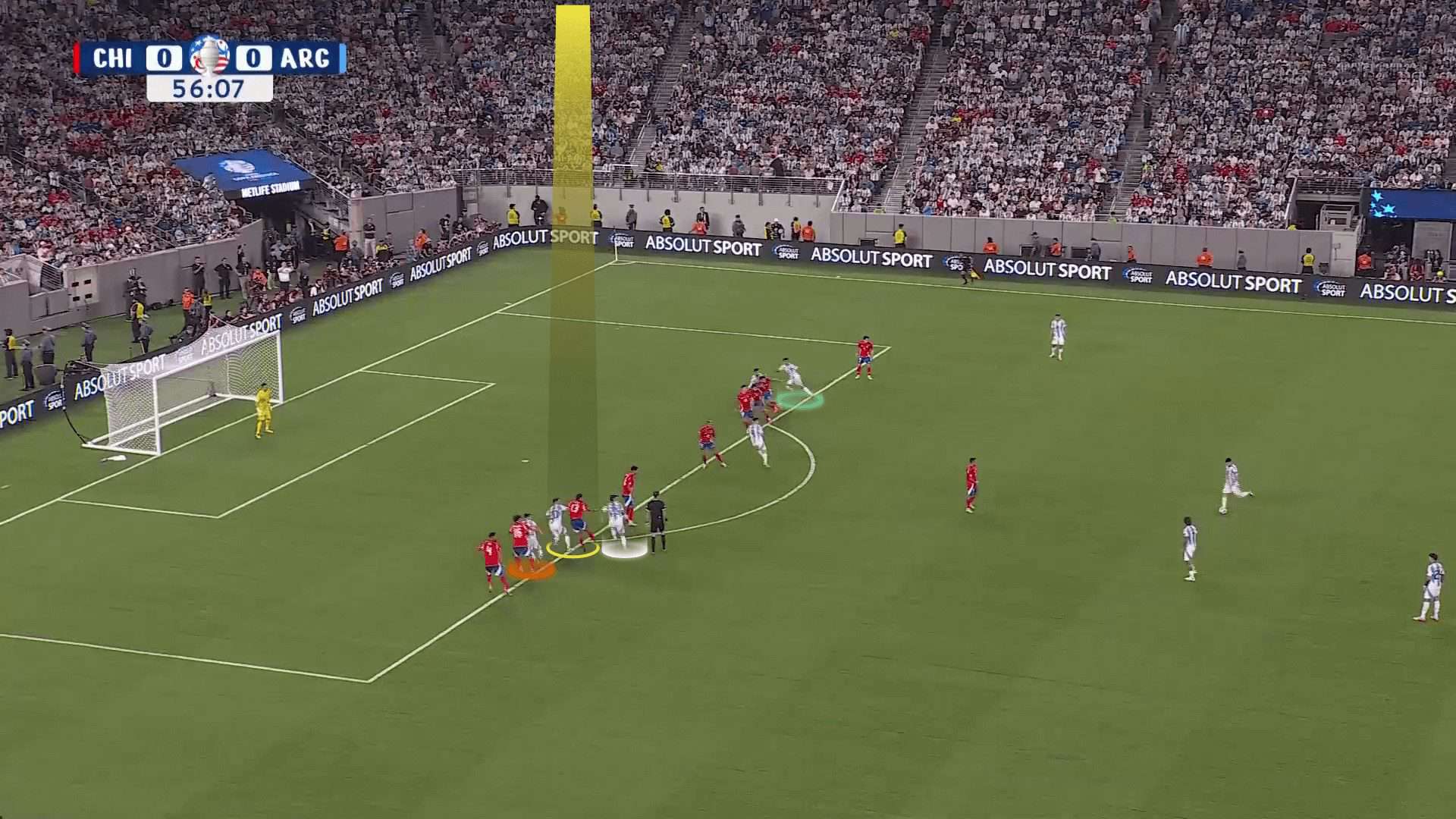




Comments